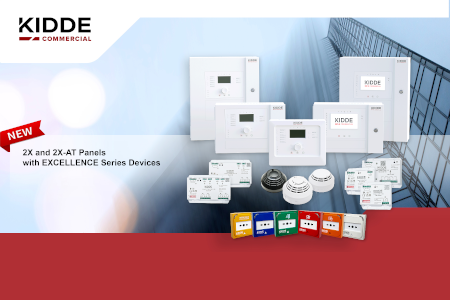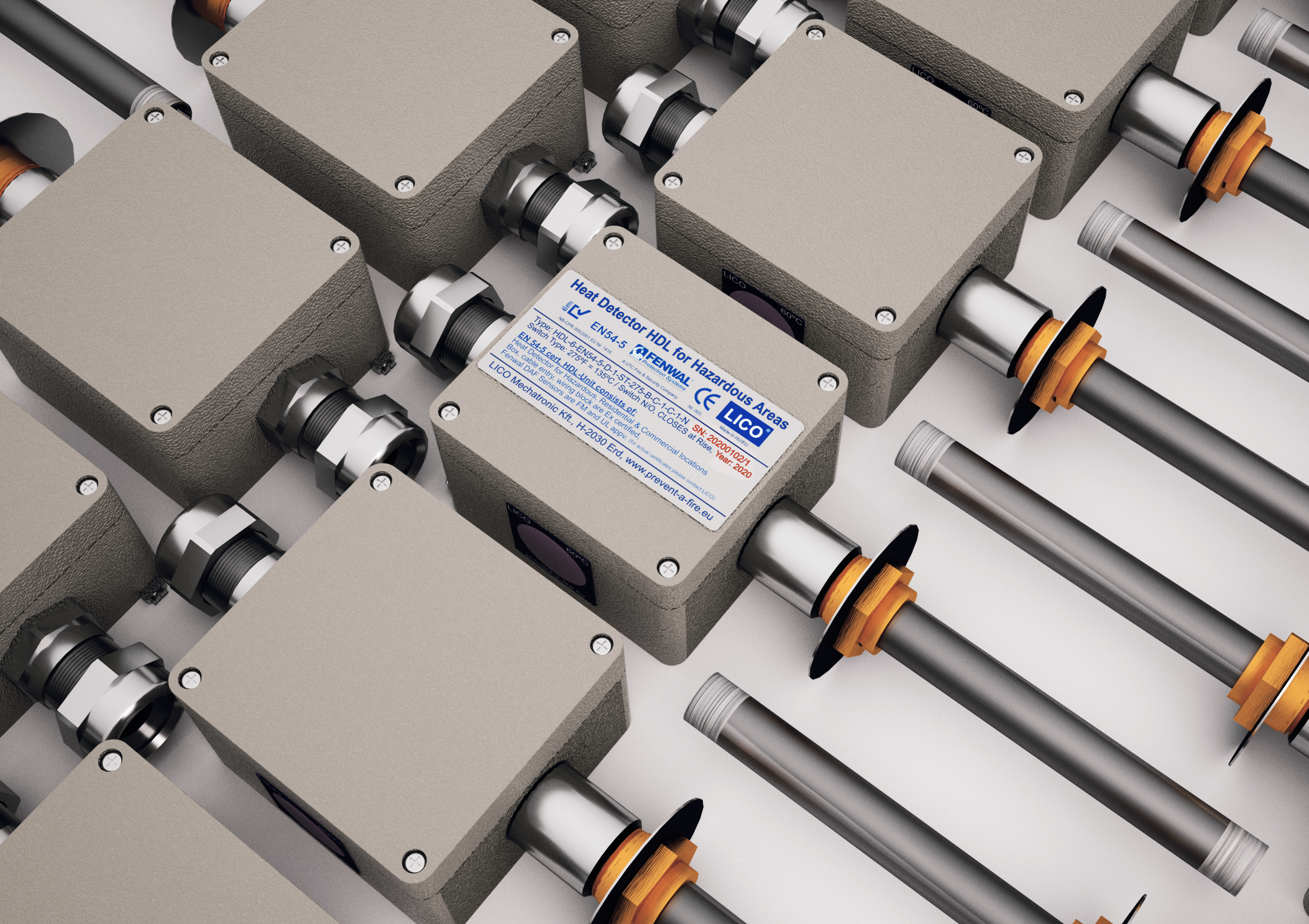By Dr. Allan Jowsey MEng AIFireE MSFPE, Fire Engineering Manager for International Paint
The intumescent coatings industry has moved at a fast pace over recent years. Understanding passive fire protection technology and the impact of legislation is important to ensure compliance with international standards for fire and life safety.
Introduction
The ever-increasing use of steel as a construction material has led to enhanced flexibility in design, as well as significant time savings in the construction industry. However, its use in social infrastructure and buildings has brought an additional challenge – that of fire safety. In the event of a fire, steel can lose its strength and collapse, resulting in damage to property and in the worst case, loss of life.
Almost all buildings incorporate some fire safety measures. In the event of a fire, structures are required to maintain their stability for a reasonable period of time to enable occupants to evacuate and to provide safety to fire-fighters.
There are numerous products available to designers to satisfy the fire resistance requirements of their projects. Intumescent coatings provide one such method. They react in the presence of intense heat to form an insulating layer, protecting the underlying steel and extending the duration of its structural integrity.
Traditional methods of fireproofing, such as cementitious coatings and gypsum boards, can only be applied on-site and are often considered aesthetically unappealing for visually exposed steelwork and labour-intensive to apply. Intumescent coatings allow for easy off-site and on-site application during construction and provide an attractive finish that does not compromise intricate designs and shapes created from the steel. This allows maximum architectural expression for structures such as airports, stadia, leisure facilities, hospitals and office buildings.
As with any fire protection product, it is important to understand its basis to ensure correct specification and one that is fit for purpose. This article outlines some of the keys issues that architects, engineers, fabricators, applicators and Approving Authorities should be aware of when dealing with intumescent coatings.
To fully appreciate the role of passive fire protection, it is important to understand three main things:
How a structure will perform in the event of a fire?
What fire scenario may it be exposed to?
What benefits can passive fire protection offer?
Structural response
Structural steel reduces in strength and stiffness with increased temperature. This can have a detrimental effect on the stability of a structure. Unprotected steel will heat very rapidly in a fire. The aim of an intumescent coating is to insulate the steel and keep it relatively cool for the required fire resistance rating.
The response of a steel structure in a fire can be further influenced by the maximum temperature attained, the degree to which it is loaded, its restraint and the mechanical properties of the steel itself.
The term ‘Fire Resistance Rating’ is associated with the ability of a building element to perform its function as a barrier or structural component for a specified time during the course of a fire. It is often specified in combination with a critical steel temperature as set by a qualified engineer. Durations vary with legislation around the world, but a typical period may be 60, 90 or 120 minutes.
The basis for the rating is typically specified in accordance with design standards and guidance documents. These documents vary in nature around the world, but fire resistance requirements are strongly related to the risk of fire (occupancy use), the height of the structure and may be associated with provision of a suppression system. It is critical to understand the correct legislative requirements for a project.
Intumescent coatings can cover a wide range of structural sections including universal beams and columns, circular and rectangular hollow sections and concrete-filled tubes. Depending on the type of intumescent coating, it is possible to protect members for up to 3 hours fire resistance. Manufacturers also assess their products over a wide range of critical temperatures – known as Multi-Temperature Assessments (MTAs). These may typically be 350°C to 750°C and can permit engineers to specify temperatures of their structural elements as part of an optimised design.
Fire types
The fire protection industry has adopted standard “fire curves” for different types of fires:
Cellulosic fires are fuelled by combustibles such as wood, paper and textiles. They are typically associated with commercial infrastructure.
Hydrocarbon fires, or pool fires, are fuelled by oil and gas and have a very rapid heat rise. They can be extremely turbulent as they entrain oxygen to maintain combustion.
Jet fires are a particular group of hydrocarbon-fuelled fires expelled from an orifice under high pressure. They can have high erosive forces in addition to high heat fluxes above those experienced in open pool fires.
Epoxy intumescents are used where there is a risk of hydrocarbon and jet fires, Thin-film acrylics are typically used where there is risk of a cellulosic fire, although an epoxy coating may be required for durability.
Intumescent coatings
Intumescent coatings work by undergoing a chemical reaction when heated to form an expanded, thermally insulating layer. The coatings include an acid source – typically phosphorous-based, a carbon source and one or more blowing agents dispersed in a suitable resin system. At temperatures of around 200°C the acid and carbon source react to form a carbonaceous melt which is then expanded by gases generated during the thermal decomposition of the blowing agents resulting in a sponge-like char.
Intumescents are available in categories that include thin-film water-borne or solvent-borne acrylics and high-build epoxies. The choice of which to use on a specific project is dependent on factors that include :
The fire resistance rating and fire exposure type: Often set by a design standard and influenced by the occupancy use of the structure
Legislative requirements including the fire test standard: Strongly linked to global geographic location with fire test standards being referenced in design documents
Durability and anti-corrosion requirements: The degree of environmental exposure of the steel is important in selecting an intumescent coating. Environmental Classifications are set out in ISO 12944 Part 2 (C1 to C5M).
Aesthetics: Manufacturers often supply sample panels to demonstrate the levels of finish available, including top-coat colour ranges
On-site or off-site application: Linked to construction sequencing and use of trades on site. Intumescents coatings are available that are dedicated to either one application or both
Surface preparation: Steel may be galvanized, abrasive blast cleaned to SA 2 in accordance with ISO 8501-1:1988 and treated with an appropriate primer if required. It is important to understand compatibility of intumescent coatings over primers: If in doubt, consult a manufacturer.
Drying times and over-coating intervals: Important in construction sequencing. Together with the thickness of paint that can be applied in one application, this dictates the duration to get a finished application.
Sustainability credentials: As part of adding to a building’s sustainability aspirations, intumescent coatings are available as solvent-free and chlorine-free, together with low volatile organic compounds (VOCs).
Intumescent coating manufacturers often work closely with their clients throughout their projects to ensure a product is chosen that fits with the fire resistance rating requirements, meets the durability specifications and aligns with construction timeframes.
Fire testing and certification
Regardless of where an intumescent coating is used, it is important that it has undergone rigorous testing to a relevant fire test standard and assessed against a recognised methodology (see Table 1).
Fire protection products require extensive testing, as approval regimes and certification requirements vary across the globe. As an example, a product may be originally tested and certified for use in the UK, but for launch into mainland Europe or China, it will have to be completely re-tested.
Intumescent coating manufacturers are faced with the challenge of tailoring products and marketing strategies to fit different geographic regions.
The size and construction of a fire test specimen would ideally represent the element in its intended position in a building. Typically, loaded beams are tested horizontally, with protection applied to three sides and with the top flange directly in contact with a floor slab. Columns are tested vertically, with the protection applied to all sides. This leads to the terms “3-sided” and “4-sided” exposure when dealing with fire protection to steelwork.
As an example, within the UK and Europe, a test programme for unloaded sections is required to explore the relationship between fire resistance, dry film thickness and section size. A typical programme may include at least 10 sections. To address the issue of adhesion to the substrate (stickability), additional tests are required to complement loaded member tests.
Methods of assessing the performance of fire protection materials have been developed which enable the thickness of protection for a wide range of situations to be predicted, based on a limited number of tests as defined in a fire test.
Following a programme of fire tests on both loaded and unloaded specimens, a mathematical procedure is applied to the results, which enables predictions of required thickness to be made.
Certification bodies act to provide confidence that an intumescent product not only complies with the minimum regulatory requirements, but that it also meets a stringent set of requirements. Independent third-party certification provides a quality mark that is designed to enable manufacturers to clearly demonstrate the superiority of their products versus non-certified products. Additionally, these bodies can include type and audit testing conducted on independently sampled products and independent factory production control inspection.
Looking to the future
AkzoNobel’s International Paint business aims to provide its customers with more efficient fire protection solutions. The company also strives to offer environmental and sustainability leadership, whether through lower-VOC products, reduced carbon footprint or the use of bio-renewable materials.
Future work will focus on establishing new technology platforms to support product development. With this in mind, International Paint has established a Fire Protection Centre of Excellence with a £5.5-million state-of-the-art fire protection laboratory that was opened at Felling in northeast England in June 2011. This lab aims to promote technical leadership and push the boundaries of intumescent coatings to develop innovative, safe and robust fire protection systems, tested to align with the needs our clients.
The lab contains two screening furnaces, two 1.5m3 furnaces and a large 4m x 3m x 2m floor furnace with the capability of testing loaded beams. It also houses paint development labs, dedicated paint spraying facilities and environmentally controlled conditioning areas. Up to 10 fire tests per day can be accommodated within the new development, including bespoke fire testing to suit customers’ needs.
The laboratory works closely with the company’s Marine & Protective Coatings Technology Centre, also based at Felling, to understand the physical and chemical processes during the intumescent reaction and to investigate new materials. In addition, it has collaborations with operations in AkzoNobel’s Functional Chemicals group and its Material Physics expert capability group, as well as a number of universities that are providing expertise in structural and fire engineering.
Summary
Intumescent coatings provide a proven method to achieve a required fire resistance rating for a structure. Before a specific coating can be chosen, however, it is important to ensure that the coating meets the specifications and is fit for purpose.
Understanding global and local fire safety legislation, fire testing requirements and product performance is key. Intumescent products are subject to extensive testing to a wide range of global test standards, and these tests and their associated assessments, together with independent third-party certification, provide confidence that a product will be fit for purpose and meet expectations.
The market for intumescent coatings is estimated to be approximately 50 million litres per annum and it is growing strongly. But despite the technology being well established, there have been relatively few new technologies developed in the last 10 years and there remains the need for innovation to produce more effective and environmentally friendly systems.











